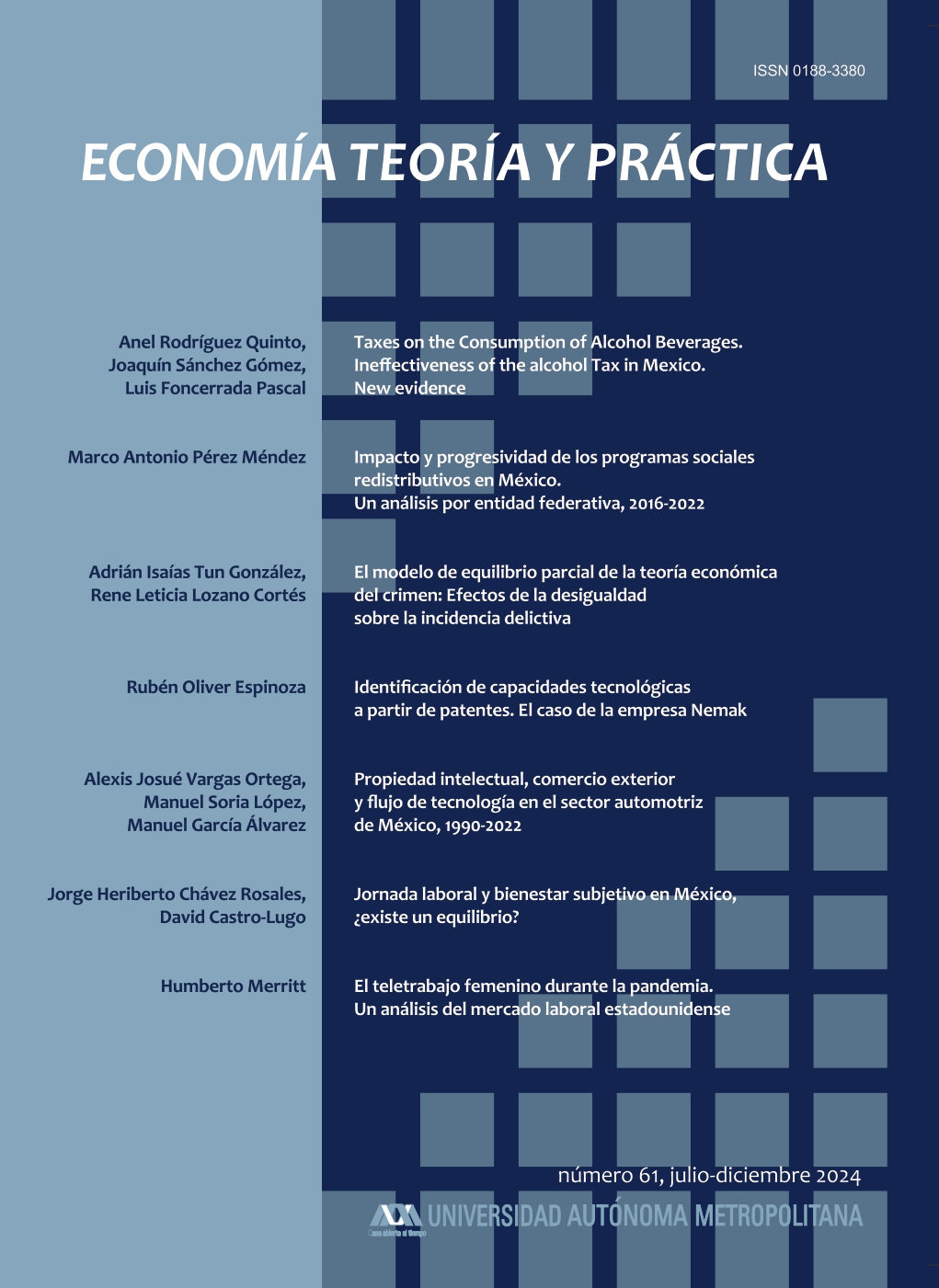The partial equilibrium model of the economic theory of crime: Effects of inequality on crime incidence
Copyright (c) 2025 Economía teoría y práctica

This work is licensed under a Creative Commons Attribution-ShareAlike 4.0 International License.
Abstract
The aim of this paper is to present the results of a systematic review of the literature on the economic
theory of crime, specifically those studies that have led to the development of a partial equilibrium
model of the crime market, where inequality plays a relevant role in the decisions to commit a crime.
After analyzing the theoretical and empirical contributions of research studying the factors favoring
the incidence of crime from an economics of crime perspective —emphasizing economic incentives
favoring criminality, as well as probabilities of not being apprehended or punished— the analysis
incorporates ideas about equality of opportunity in income distribution. One of the main findings of
this study is that the relationship between income inequality and crime incidence is non-linear, contrary to traditional theory which assumes a positive relationship. Furthermore, the available empirical literature provides inconclusive evidence of a stable and positive relationship between crime and
income inequality.

